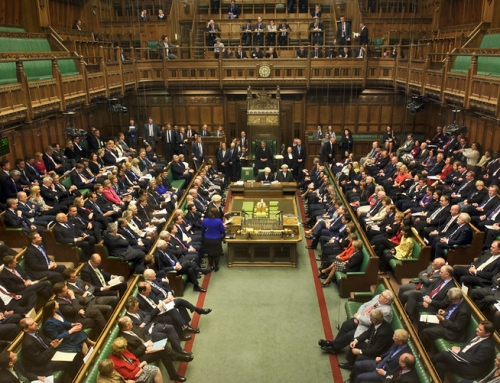1. Some supporters of selection talk as if the period when all children took the 11+ was some golden age of opportunity and social mobility. This is nonsense. As Adrian Elliott in his very thorough examination of state schools in the 50s concludes ‘The clamour in some sections of the press that a return to selection would benefit the poorest is based on ignorance of the past’(i).
2. After the Second World War, a new secondary education system was established with grammar, technical and secondary modern schools. An examination at age eleven (the 11+) determined who was selected for grammars. The majority of children went to secondary moderns. The system had its critics from the outset: ‘The suggestion …seems to be that the Almighty has benevolently created three types of child in just those proportions which would gratify education administrators’ (ii).
3. Selection at eleven caused increasing dissatisfaction among parents and educators. Bright, intelligent children were rejected by the 11+, as is evident from the later achievements of many 11+ “failures”. Others who were admitted to grammar schools did not flourish there.
4. Supporters of bringing back selection need to listen to the views of older people who went through the selective system. 1000 over 50 year olds were surveyed by Love to Learn in 2012 (iii). 45% of those who failed the 11 plus still carried negative feelings about it into their fifties, sixties and beyond. Many of them said that it had put them off learning for life. 36% said they still lacked the confidence to learn.
5. The Gurney-Dixon Report (1954) Early Leaving identified that even if children of semi-skilled and unskilled workers got into grammar schools they were more likely to leave early without gaining qualifications. Two thirds of the children of unskilled workers left without 3 O levels (iv).
6. Grammar schools have never admitted significant numbers of working class pupils to enable them to go on to higher education. The Crowther report in 1959 showed that only 10% of the children of the poorest section of the population went to grammar school (v). This is at a time when a much higher proportion of the population would be described as working class. Of those that did get in many did not remain to do A levels.
7. The Crowther report said The rapid rise in school rolls after the war ‘has largely increased public clamour against a competitive element in grammar school selection, which seems to parents to be contrary to the promise of secondary education according to “age, aptitude and ability”. The report was based on two national surveys of English 15-18 year olds carried out in 1957 by the COI, and also used was a survey of National Service recruits carried out 1956-8. Naturally the latter was only on boys. In both surveys, boys from homes of semi-skilled or unskilled workers ‘were much under-represented in the composition of selective schools…Likewise they are over-represented in membership of non-selective schools. The converse is true of boys from professional or managerial homes, who have far more than their proportional weight in selective schools and far less in the case of other schools’. Again the report highlighted the problem of early leaving. On school leaving ages, the survey reported that 38% of the sons of the professional and managerial classes stayed till 18+ compared with 9% unskilled manual workers’; 40% of professional and managerial sons left before 17 compared with 81% manual workers. The National Service survey concluded that ‘a majority of the sons of professional people go to selective schools, but only a minority of manual workers’ sons do so’. ‘A non-manual worker’s son is nearly three times as likely to go to a selective school as a manual worker’s’.
8. In the past very few young people with parents in manual jobs went to university. The Robbins report in 1963 showed that of undergraduates born in 1940 only 6 % were children of semi-skilled manual workers and only 1% of unskilled manual workers (vi).
9. Some opponents of ending selection focus on Oxbridge, saying that there were more state school pupils there when there was selection. Comparisons with the old days on Oxbridge entry include direct grant schools as state schools. These schools mostly became independent when comprehensive education was introduced. A report for MPs by the House of Commons Library in 2014 shows that contrary to what is claimed the proportion of state school pupils in Oxbridge increased from 1970 onwards that is since comprehensive education became more widespread (vii). It quotes the Robbins report 1961 which showed that 34% of Oxford students and 27% of Cambridge students had attended a state secondary school. Now the proportions at both are around 50%.
10. In the 1960s, it became government policy to promote comprehensive education. Growing numbers of education authorities (Conservative and Labour) in the ‘sixties and ‘seventies abolished the 11+ and established fully-comprehensive systems of all-ability schools. Contrary to some media reports the change to comprehensive education was across local authorities of all political persuasions as Jesson (viii) reported many LEAs of all political persuasions had by this time (1965) already begun moves to abolish selection in their areas. In other countries, too, comprehensive schooling was being adopted. Several authors have written a history of the introduction and development of comprehensive education (ix).
11. By the 1970s the Oxford Mobility Studies were demonstrating the influence of parental social status on childrens’ acquisition of higher educational qualifications (x). It was upper and middle class pupils in both private and state grammar and direct grant schools who were most likely to gain entry to universities and the more prestigious jobs. Between 1944 and 1972 an extra 1.5% of working class children arrived at university compared to an extra 13% of upper-middle class children.
12. Until recently a widely used measure of performance was five or more passes at A* – C at GCSE the equivalent of O levels of the 60s. Whereas in the mid 1960s only 16% achieved in 2011 78.8% achieved it. In 2015 56.1 % of state school pupils achieved 5 GCSEs including English and Maths at grade C or above (xi).
13. So there was no golden age when grammar schools prepared poorer pupils for higher education. Comprehensive schooling allowed for the expansion in numbers of pupils prepared for HE entry. Attempts to widen access to HE for the poorer children should look carefully at the causes of lower prior attainment by young people from poorer backgrounds rather than bringing back more grammar schools.
14. Since comprehensive education was introduced in much of the country, barriers to achievement for many young people have been removed. The annual government statistics on school attainment, examination results, and participation in further and higher education offer clear evidence of a ‘levelling-up’ over the last 25 years. Many more young people stay on at school and go to university now than when we had a selective system.
Refs
i Elliott, A. (2007), State schools since the 1950s, the good news, Trentham Books
ii S.J.Curtis quoted in Michael Barber (1994) The Making of the 1944 Education Act, London: Cassell.
iii Love to Learn. (18 September 2012) press release.
iv Gurney-Dixon Report (1954) Early Leaving Central Advisory Council for Education (England)
v Crowther Report (1959) 15 to 18 A report of the Central Advisory Council for Education (England)
vi Robbins Report (1963) Higher Education Cmnd. 2154 HMSO
vii House of Commons Library standard note Oxbridge elitism. June 2014
http://researchbriefings.parliament.uk/ResearchBriefing/Summary/SN00616#fullreport
viii Jesson, D (2013) The Creation, Development and Present State of Grammar Schools in England . University of York for the Sutton Trust
http://www.suttontrust.com/researcharchive/creation-development-present-state-grammar-schools-england/
ix Weeks, A.(1986) Comprehensive schools, past, present and future, Methuen; Simon,B, (1998 ) A Life in Education, Lawrence and Wishart, and other writings by Brian Simon; Tomlinson, S (2005). Education in a post-welfare society,OUP; Benn, C and Chitty, C. (1996) Thirty Years On, Fulton; Paul Bellaby, P. (1977) The Sociology of Comprehensive Schooling, London: Methuen. Fogelman, K in Hewlett, M, Pring,R and Tulloch M (2006) Comprehensive Education:evolution, achievement and new directions, University of Northampton Press: Elliott,A (2007) State schools since the 1950s, the good news. Trentham Books and Benn, M (2011) School Wars: the battle for Britain’s education ,Verso. Anastasia de Waal ed (2015) Power.S and Whitty G in The Ins and Outs of Selective Schools, a debate. Civitas
x Halsey A.H. “ Towards Meritocracy: The Case of Britain” in (eds)Karabel J. and Halsey A.H. Power and ideology in Education Oxford. Oxford University press
xi DfE ( 20 October 2011) GCSE and Equivalent Results in England 2010/11, SFR 26/2011
https://www.gov.uk/government/statistics/revised-gcse-and-equivalent-results-in-england-academic-year-2010-to-2011
DfE ( 15 October 2015) Provisional GCSE and equivalent results in England: 2014 to 2015. SFR37/2015
https://www.gov.uk/government/statistics/provisional-gcse-and-equivalent-results-in-england-2014-to-2015




